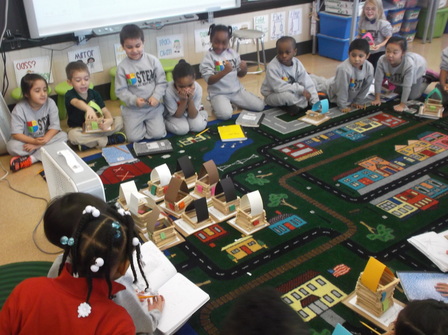
The results? Take a look at the pictures to see just what happened!!! All houses were tested against the fan at speeds 1, 2, and then 3. Not one of them fell down. Way to improve your designs!
YOU ROCK ENGINEERS!
Engineers have touched so much of the world around us! Kindergartners will learn just what an engineer can do, focusing on identifying technologies they have designed. Technologies are anything that has been designed to meet a need or a want. So many technologies that engineers have developed have solved the many problems we face each and every day.